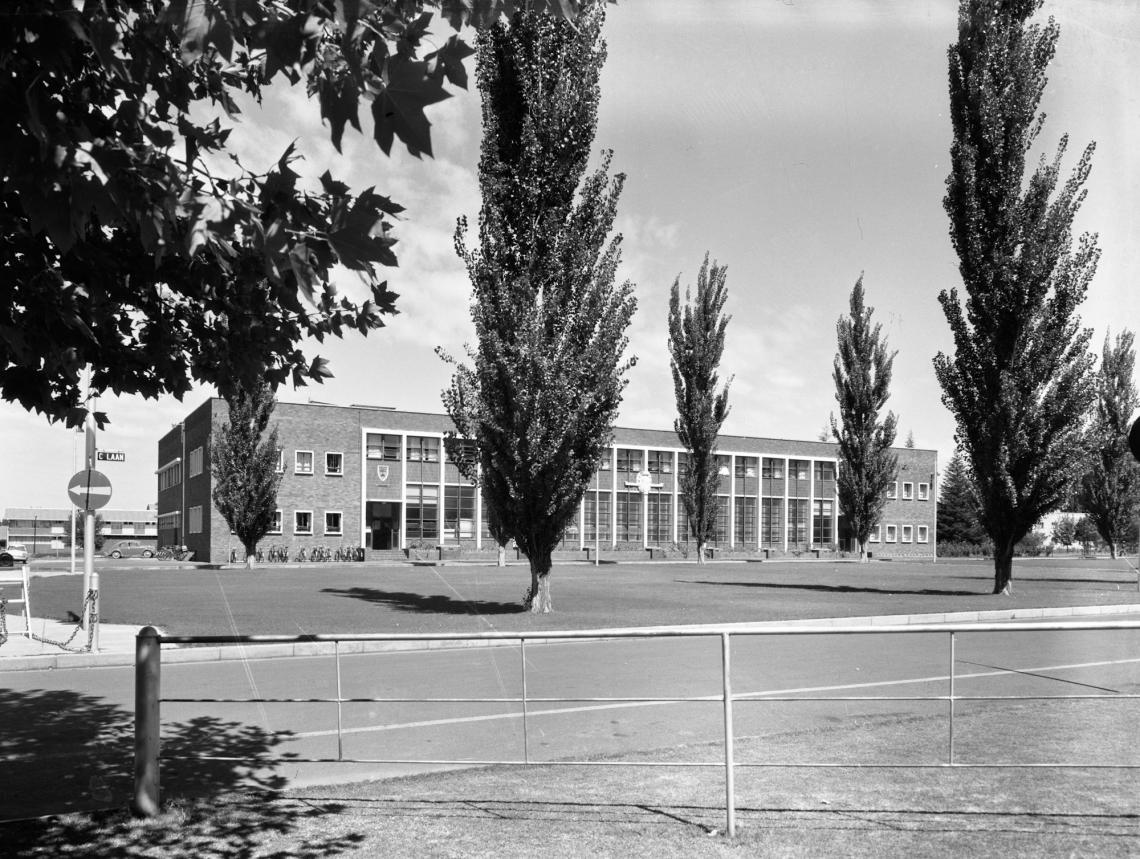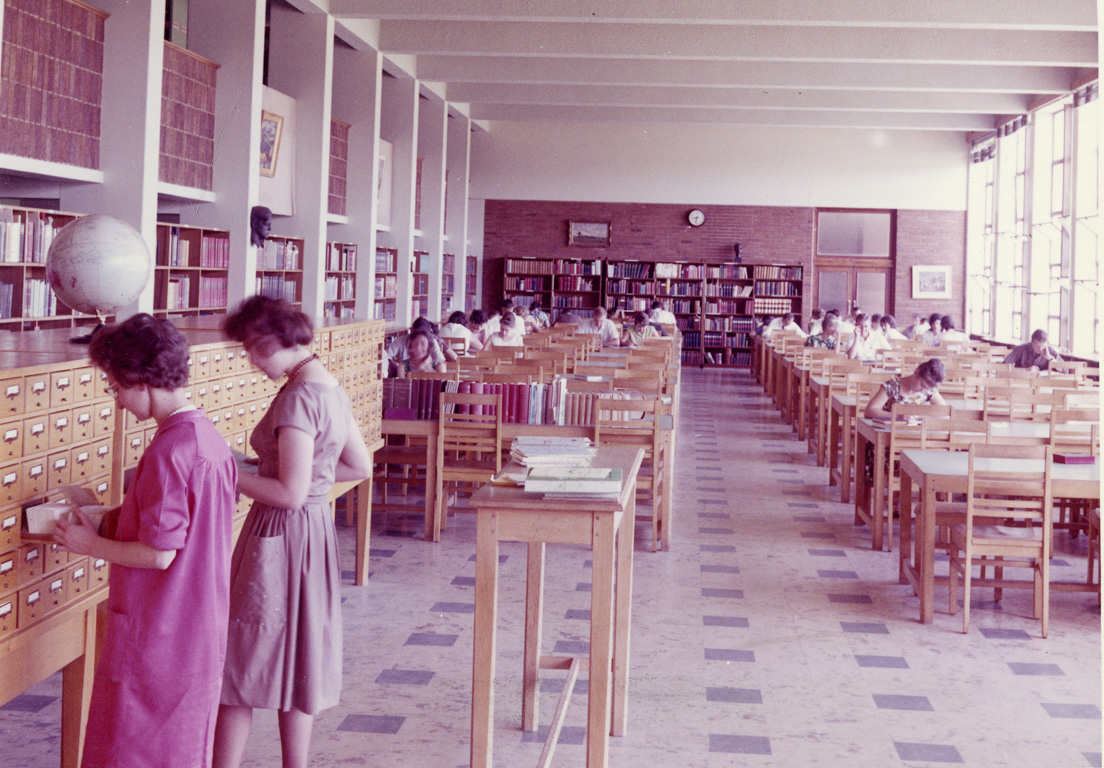Ferdinand Postma Library (E7)

The cornerstone of the Ferdinand Postma Library was laid on 17 March 1951 on the same day as the independence of the Potchefstroom University for Christian Higher Education (PU for CHE). On 29 November 1952, the ornate and efficient new Library building was commissioned.
It is proudly named after the person who was connected with the university for 46 years and for 29 years as Rector, namely Prof Ferdinand Postma. The initial library was housed in corrugated iron buildings until it occupied rooms in the new main building in 1931.
The shocking end of this period of the library's life, the fire disaster of 23 February 1949. The fire could have been confined to the first floor's north-east wing, but the library was left in ruins. It is calculated that 30 000 books and 4 000 magazines was destroyed in the fire. Amongst the irreplaceable items were original manuscripts of the works of the author Jan F. Cilliers. Plans were immediately made for a new modern library building.
The building was designed by architects Meiring and Naude and erected by the firm Van Heerden and Johnson and cost approximately £ 65 000 (R 128 000).
With its commissioning, the new library had storage space for 100 000 to 120 000 volumes in its warehouse, undisturbed study spaces for 160 students in a study hall and 12 small study rooms for advanced research students. Ample provision has been made for office and work space for library staff members, for a well-equipped bookbinder, a photographic section and for a few seminar rooms.

The library was the first university library in South Africa to use optical data disks to provide information quickly and efficiently to lecturers, researchers and students. A compact laser disk had an incredible capacity for that era - more than 1 000 books of information could be stored on it - an entire library on a 12cm disk!!
At one stage the library experienced a space problem and this led to the expansion of the building. By 1971, the plans to significantly expand the library had been completed and by 1974 the extensions had been completed. this is basically the building as it is currently still in use.
_edited.jpg)
